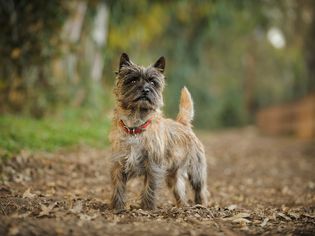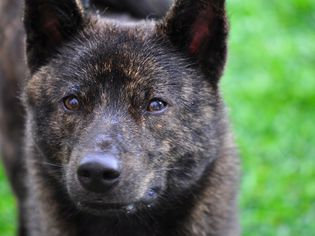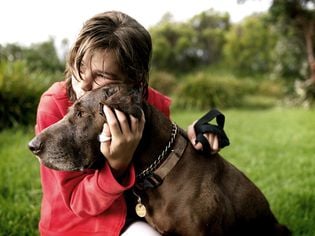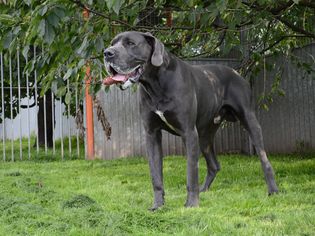The English foxhound is a medium-large hound dog breed from England with a short, thick coat that often comes in tricolor (black, white, and tan). The breed’s long legs and deep chest contribute to its athleticism and endurance. These scent hounds are wired to hunt in packs of dogs. They are best for an active owner who is able to manage both their energy and their prey drive. And you'll be rewarded with a friendly and devoted companion.
Breed Overview
Group: Hound
Height: 24 inches
Weight: 60 to 75 pounds
Coat: Short double coat
Coat Color: Black, white, and tan or lemon and white
Life Span: 10 to 13 years
Temperament: Affectionate, companionable, energetic
Hypoallergenic: No
Origin: England
Characteristics of the English Foxhound
The English foxhound generally has a sweet and social personality, as it’s a pack hound. It can even get along with kids and other dogs. A high energy level also helps to shape this breed’s temperament, and it requires ample exercise each day.
| Affection Level | High |
| Friendliness | High |
| Kid-Friendly | High |
| Pet-Friendly | High |
| Exercise Needs | High |
| Playfulness | High |
| Energy Level | High |
| Trainability | High |
| Intelligence | Medium |
| Tendency to Bark | High |
| Amount of Shedding | Medium |
History of the English Foxhound
The English foxhound can trace its ancestors back to the 1600s in England. People who had previously engaged in stag hunting with their packs of dogs had turned their attention to a new target in the fox due to the decrease in the deer population. So they crossed their large stag-hunting hounds, with their sharp noses and good endurance, with faster and more agile greyhounds and similar dogs.
The English foxhound took shape, and today’s version still strongly resembles the dog that arose hundreds of years ago. Fox hunting was still an elite pastime during the 1700s. And it even inspired people in Colonial America, including George Washington, to create their own version of the foxhound by breeding the English foxhound with French hounds.
The English foxhound still remains relatively rare in North America, compared to the American foxhound. The American Kennel Club first recognized the English version in 1909.
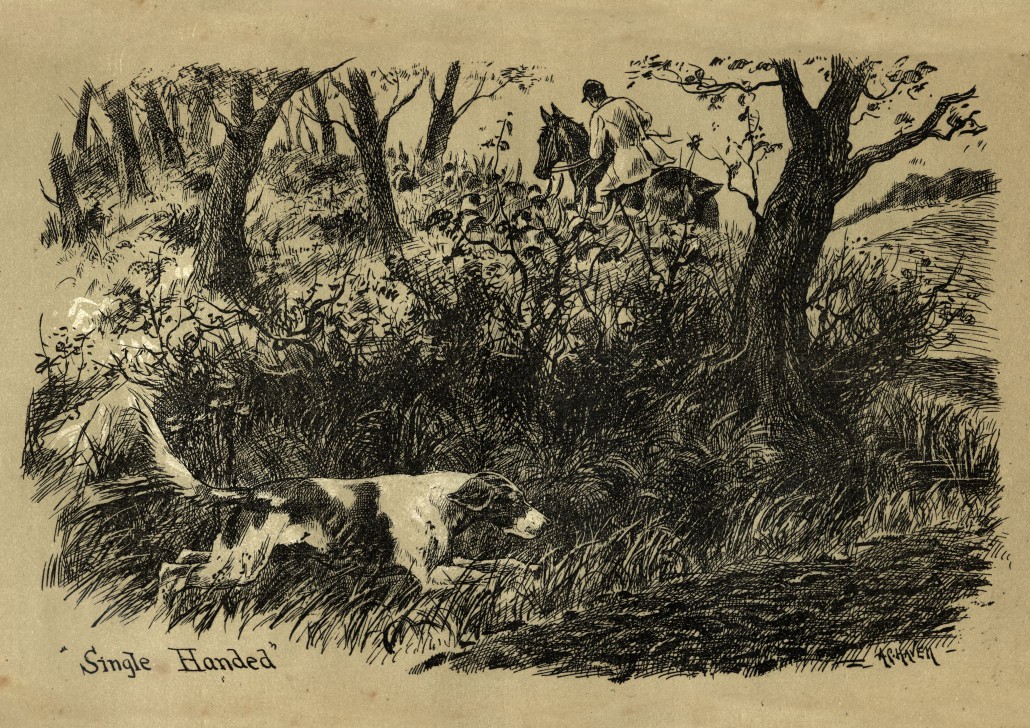
English Foxhound Care
Expect to spend lots of time exercising this active breed. Fortunately, it generally only requires basic grooming. And it usually takes well to training.
Exercise
Aim for at least two hours per day of exercise for an English foxhound. This dog loves to run and explore outdoors. But it’s important to keep it on a leash or in a securely fenced area; otherwise it can quickly run off chasing perceived prey. Long walks, hikes, running, and cycling all are ideal activities to get some of a foxhound's energy out. Plus, dog sports, such as agility and tracking, can provide mental stimulation as well as physical activity.
Grooming
Brush your dog weekly to remove loose fur and distribute skin oils. Expect periods of higher shedding, often in the spring and fall as the weather changes, during which you’ll have to brush more frequently to keep up with the loose fur.
Bathe your foxhound every month or so, depending on how dirty it gets. And see whether its ears need cleaning at least weekly. Also, make sure to dry the ears well anytime they get wet. Trim your dog’s nails roughly once a month. And aim to brush its teeth every day with a canine toothpaste.
Training
Begin training and socialization ideally when your dog is a puppy to instill good manners and prevent bad habits from forming. A puppy obedience class can teach both basic commands and social skills.
English foxhounds typically respond well to positive training methods, such as treats and praise. But they can be a bit stubborn. So it’s important always to be consistent with your commands; don’t let bad behaviors slide.
Common Health Problems
Overall, the English foxhound is a healthy breed. But it is prone to some hereditary health issues, including:
- Bloat
- Ear infections
Diet and Nutrition
Always provide fresh water for your dog. And feed a quality canine diet with balanced nutrition. It’s typical to feed two measured meals per day. But because this breed is prone to bloat and potentially life-threatening stomach twisting, which can arise from eating too quickly, you might want to feed smaller, more frequent meals. Also, aim to keep your dog calm around mealtimes. Make sure to discuss both the type of food and the amount with your vet to ensure that you're meeting your dog's individual needs.
Where to Adopt or Buy an English Foxhound
English foxhounds aren’t incredibly common in North America, but it is still possible to find them at animal shelters and rescue groups. See whether you can get your name on a breed wait list if possible. If you’re looking for a puppy from a reputable breeder, expect to pay around $600 to $1,000 on average.
For further information to help you find an English foxhound, check out:
- English Foxhound Club of America
- Foxhound Rescue
English Foxhound Overview
Affectionate and family-oriented
Generally thrives in households with other dogs
Low-maintenance grooming
High exercise needs
Often very vocal
Strong prey drive
More Dog Breeds and Further Research
As with any breed, do plenty of research before bringing home an English foxhound to ensure that it’s right for your lifestyle. Talk to foxhound owners, rescue groups, reputable breeders, and veterinary professionals. Spend some time around the breed in person too if you can.
If you’re interested in similar breeds, check out:
- Beagle
- American foxhound
- Harrier
There’s a whole world of potential dog breeds out there—with a little research, you can find the right one to bring home!
- Are English foxhounds good family dogs?
Well-trained and socialized English foxhounds are generally good around children. They are often very loving and gentle, though all dogs should be supervised around young kids.
Are English foxhounds aggressive?English foxhounds that have received proper training and socialization typically do not display aggression. But they do have a high prey drive and might perceive smaller household pets as prey.
Are English foxhounds good apartment dogs?English foxhounds do best in a home with a secure yard in which they can roam freely. They are often too energetic and vocal for apartment living.


